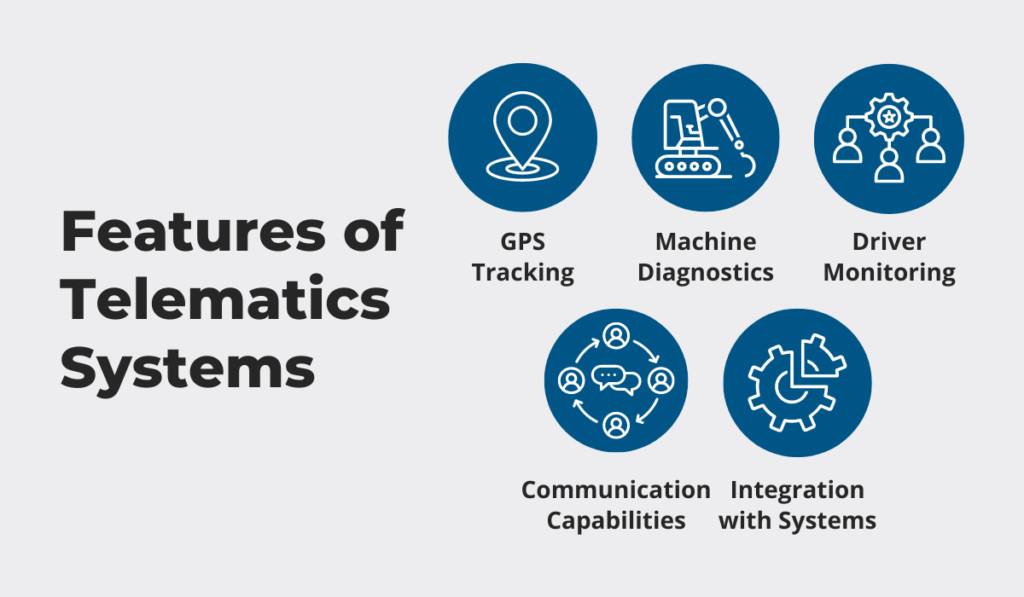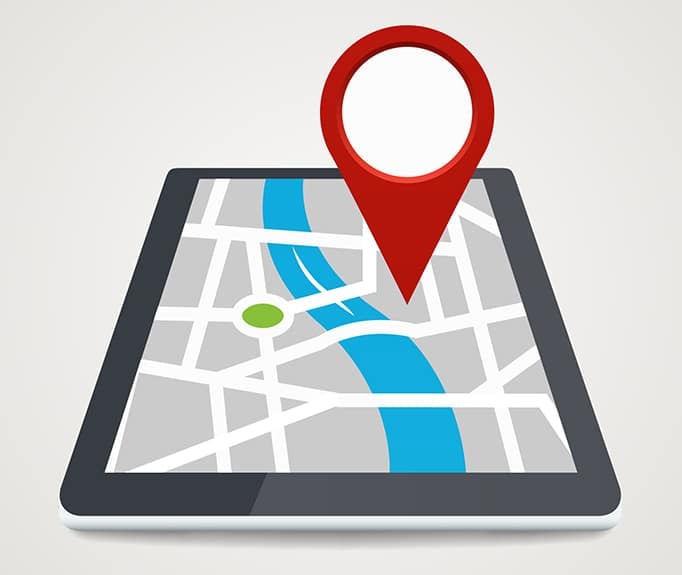Key Takeaways:
- Telematics are like X-rays, giving you detailed information about equipment use
- They can act like remote controllers, allowing you to disable machinery when needed
- With heaps of data from this technology, you’ll make better decisions for your business
Is there a way for equipment rental companies to quickly take their operations to the next level?
Well, there are no easy hacks in business, but introducing telematics often feels like one.
The data you can collect with telematics systems paints a detailed picture of when and how each of your assets is used, giving you more visibility and control over your fleet.
In this article, we’ll dive into the 5 benefits of using telematics for equipment rentals.
If you’re not sure whether this technology can address your company’s pain points and help you increase efficiency and profits, keep on reading!
In this article...
Easy Equipment Tracking
The main thing about telematics is that it makes equipment tracking effortless, streamlining the entire process for both you and the renters while giving you a bulk of insights.
If you’re wondering how one system can do all that, the answer is it can’t.
At least not on its own.
Fleet telematics is a monitoring method that integrates multiple technologies to optimize fleet management and drive efficiency, and GPS trackers are one part of that equation.
Real-time tracking is an integral part of these systems, but there are a few other features that help you connect all fleet data in one spot.

So, you will know exactly where your asset is thanks to GPS tracking.
But how does it all tie in with equipment rentals, and how can these features help?
For starters, telematics gives you insights into the location and availability of all your equipment.

Imagine a scenario where you’re in the rental yard or on the jobsite, and you stumble upon a piece of equipment that’s marked off for rent.
If it’s still there, does that mean the customer is waiting on that asset? And are there other similar mishaps with the rest of the inventory?
Telematics systems eliminate these situations, by bringing a high degree of visibility and connectivity into your inventory.
It means everyone who needs to know which equipment is ready for redeployment has access to that information at all times.
Equipment Theft Prevention
Thanks to real-time GPS tracking, telematics bolster security and enable asset retrieval in cases of equipment theft.
The ever-increasing demand for rental equipment shows greater, industry-wide reliance on rentals, but also suggests that construction equipment rental companies are now at a greater risk of theft.
The 2016 report by the National Equipment Register (NER) indicated that US companies suffer huge annual losses due to equipment theft, with an average cost of one stolen piece reaching nearly $30,000.

Fast forward eight years to more advanced machinery with heftier price tags and a volatile market, and the direct and indirect costs of stolen equipment are suddenly much higher.
The good news is that companies equipped with the telematics system can quickly pinpoint the location of the stolen equipment, alert the authorities, disable, and retrieve their costly equipment.
As explained by Tony Nicolleti, the Director of Sales and Business Development at DPL Telematics, the ability to pull the plug on an asset is crucial when customers neglect to pay their bills, but this also applies to cases of unauthorized use or suspected theft.

DPL Telematics shared a case where their monitoring system helped the client recover an asset stolen from one of their rental customers and led the authorities to several other stolen pieces.
It all worked from miles away thanks to a GPS tracker and a feature that enabled the rental company to disable their machine remotely before it could be moved further.
However, they weren’t aware that the asset was moved before they received a phone call from their rental customer, so things could have ended very differently.
Luckily, features like geofencing are there to provide additional security.
Geofence alerts sound the minute your most valuable assets leave their predefined geofence boundaries, allowing you to quickly assess the situation and thwart potential theft.
Here’s what setting up a geofence looks like in GoCodes Asset Tracking.

After establishing the perimeter, you can easily configure alerts based on different conditions, allowing you to limit alerts to, let’s say, night-time or weekends.
Still, the telematics system wouldn’t work without reliable GPS trackers appointed to your equipment, which are crucial for ensuring the best possible asset security.
Having a complete, reliable telematics solution is the only thing standing between you and the potentially devastating consequences of theft, so be sure to choose wisely!
You Can Monitor Equipment Usage
Since telematics combine GPS and OBD technologies, they bring extensive monitoring capabilities that extend to equipment usage, helping you stay on top of maintenance, and keep your rentals in good condition.
Businesses that want to stay competitive are no longer waiting for breakdowns to happen, but base their maintenance activities on heaps of data they receive from their telematics systems.

Given the amount of assets and different clients rental companies have to manage, this preventive approach is highly important.
Accessing real-time vehicle usage data through visual reports does not just help you optimize maintenance scheduling, but also ensures compliance, and ultimately reduces your costs.
Renting out an asset that has been serviced regularly, and whose condition is meticulously recorded, is vastly different from doing the same with an asset that hasn’t received the same attention.
By prioritizing regular maintenance, you won’t have to worry about serious consequences, the least of which are engine failures and potential disputes with the rental customer.
Detecting and addressing wear and tear on time has other perks.
Relying on telematics enhances equipment lifespan and ensures that it can deliver peak performance, which is a surefire way of boosting customer satisfaction.
But telematics can help you win over customers in other ways too.
For example, the ability to easily and accurately track fuel levels allows you to charge the rental customer the precise amount they used, paving the way for customer loyalty.
As pointed out by Trackunit’s CEO Soeren Brogaard, presenting customers with data on lower equipment usage than agreed upon, and modifying the tariff accordingly, can go a long way.

In addition to cementing trust, modifying your agreement based on equipment usage can help you secure more business opportunities and further profit for your company.
Overall, access to fresh data on equipment usage keeps both your equipment and your bottom line healthy.
Increased Jobsite Safety
Through regular equipment maintenance and remote equipment diagnostics, you also increase jobsite safety.
But there’s another big contribution to overall safety from telematics. And that is monitoring driver or operator behavior.
According to GPS Insight’s report, driver behavior monitoring is the technology of choice for half of the surveyed fleet managers when it comes to safety measures.

It is also the second most prevalent fleet safety technology in general, and for good reason.
Ensuring fleet safety requires different insights, and telematics allow you to monitor a host of risky driver behaviors.
Without advanced technologies, these behaviors would be difficult to notice even on your jobsite, but impossible to see and address when they’re happening out of sight.
That’s why you need help from telematics.
The system can detect harsh braking, hard acceleration, idling, but also seatbelt usage or cornering.

So what are the outcomes of this monitoring?
It makes it easier to recognize harmful behaviors and implement appropriate measures.
Companies relying on telematics are more successful in reducing the likelihood of accidents.
If they notice inadequate driver behavior, they can implement operator training.
That’s especially useful for rental companies offering their own operators to customers, not just machines.
Additionally, knowing which customers treat your equipment poorly can help you stay away from them.
But telematics allows you to take things a step further and ensure safety by limiting access to your rental equipment based on training credentials or other factors.
David Swan, the Senior Vice President of Products at Trackunit, points out that giving only authorized and trained personnel access goes a long way toward preventing harm.

Knowing who is operating your equipment and in what way helps identify operator behaviors that erode safety on the construction site while risking damage to your costly equipment.
Being able to address and mitigate these issues is just one part of what telematics systems bring to the table.
Data-Driven Decision Making
A wealth of telematics data facilitates better business decisions.
This data helps you identify various areas for improvement, from underutilization or overutilization of equipment to routing inefficiencies and driver behavior.
At the same time, the data enables you to easily tweak ongoing operations while pointing out the path toward long-term efficiency, and potential upgrades to your fleet.

For example, if you’re tracking equipment usage patterns, you’re also getting insights into the frequency of rentals and their duration.
So apart from optimizing maintenance schedules, you can deduce whether it would be more profitable to sell specific underused equipment.
This opens up the venue for better investments and more desirable pieces of machinery.
Of course, having a lot of data can also be a challenge.
As noted by Dale Hanna, the CEO of Fleet Intelligence, telematics systems generate a huge amount of data, but some of that data can be too difficult to understand or act on.

That’s why it’s important to know what to focus on.
A fundamental academic study of construction equipment telematics highlighted the four most relevant indicators of the telematics systems:
- Machine health
- Machine location
- Actual machine hours
- Real-time fuel consumption
These indicators remain critical today, and one reason for that is that they result in highly actionable data.
Luckily for you, the best fleet telematics systems can present the recorded data in clear, digestible reports, allowing you to make the most of the insights you collected.
Conclusion
Telematics solutions have never been more powerful or affordable, making now the perfect moment to begin using their benefits.
What’s even more true is that equipment rental businesses can no longer afford the lack of visibility when it comes to their assets’ location, condition, usage, and security.
Not relying on technology means you’re risking making all the wrong choices, as well as being left behind by those that have found better ways to manage their rental equipment business.
And if you’re still sitting on the fence after coming this far, re-read this article!





